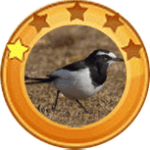- Home
- Shop
- Forest Series
- Grassland Series
- Desert Series
- Contact
- Home
- Shop
- Forest Series
- Grassland Series
- Desert Series
- Contact





Ideal Gift for Kids
This Mercedes-Benz officially licensed car has a realistic outlook and rich functions, Containing horns, music, bright LED headlights, forward/backward and high/low-speed adjustment. Perfect as a birthday or Christmas gift for kids aged 3-6.
Easy & Smooth Driving
Pressing the start button, controlling the 3-gear handle then stepping the pedal, this ride-on car with 4 wear-proof wheels runs steadily at 2-3 mph. Asphalt road, wood floor, plastic runway, grass and more are permissible.
Safe & Durable Structure
Mainly made of reinforced plastic, this sports car holds up to 66 lbs and can be used indoor/outdoor for the long term. The lockable doors and 2-point buckle safety belt provide your little driver with double protection.


CHARACTERISTICS
The Chipmunk is a member of the family Mammalia, Rodentia and Sciuridae. It is also known as the Striped Squirrel, the Timber Tiger and the Mini-bear. The body length among most Chipmunks ranges from 5.5 to 6.3 inches and the tail length is 5 Inches. Chipmunks typically weigh about 0.02 pounds and live about 5 to 10 years. They have small but prominent ears which face forwards, and small eyes on the sides of their heads. Most wild Chipmunks are lively.


Lorem ipsum dolor sit amet, consectetur adipiscing elit. Ut elit tellus, luctus nec ullamcorper mattis, pulvinar dapibus leo.


CHARACTERISTICS
The Japanese Wagtail is a species of bird in the pipit and wagtail family Motacillidae. It is native to Japan and Korea. The Japanese Wagtail is about 7.87 inches long. Adult males and females are the same in color except on the back. The head, chest, legs and bill are black, while the belly is white. The back of a male is black, but that of a female is gray black. Japanese Wagtails have a small white patch under the base of a bill and eyebrows which are connected on the forehead. Juveniles have gray plumage with the abdomen paler and eyebrows indistinct. This species molts once a year.

RANGE AND HABITAT
Japanese Wagtails are an endemic species to Japan. They breed in Hokkaido, Honshu, Shikoku, Kyushu, Sado Island and Oki Island. However, they are winter visitors in Tsushima Island, Yakushima Island, the Izu Islands, Amami Oshima Island and the Korean Peninsula (Ornithological Society of Japan 2000). Japanese Wagtails are residents in most regions of Japan, where both sexes hold their territories throughout the year. In Honshu (the main island of Japan), they occur in rivers, lakes, rice paddies and residential areas from the lowlands to the mountains. However, they prefer rivers with well-developed gravel sandbars.

DIET
In addition to the adults and larvae of aquatic insects, such as caddisflies, mayflies, dragonflies and midges, Japanese Wagtails capture small fish. They catch the larvae in the water while walking along the waterside. They also fly-catch flying insects.

BEHAVIOR
Japanese Wagtails build a nest under the fallen grass or trees of a riverbed and the gaps in a bridge girder or a building. The female mainly brings nest materials and the male sometimes does. Dried grass is used as exterior nest materials and soft materials, such as feathers and animal hair are used for the inner lining. The species also uses as nest materials cigarette filters and the cotton of a bed pad abandoned in a riverbed.
Japanese Wagtails are normally monogamous, but on rare occasions bigamous. Around late January, the male begins to sing on a stone, driftwood and at the end of a branch. His singing frequency reaches its peak in late February. Nest building starts in late February at the earliest. The first egg-laying occurs from midMarch to late March. Some of the pairs breed twice a year. Although females roost in the nest while incubating and nestling, both females and males roost in the reed bed within their territory in other periods. Both sexes hold their territory even in winter. Singing and territorial disputes become active again around October. The territorial disputes occur mainly at the waterside. The male performs a ritualized fight with another male, and the female with another female. When a stream dries up due to drought and a favorable foraging site emerges, the site attracts a large number of Japanese Wagtails, which feed in a temporal flock. During the non breeding season, Japanese Wagtails roost in a group in the reed bed of a river or roadside trees.

The Chipmunk is a member of the family Mammalia, Rodentia and Sciuridae. It is also known as the Striped Squirrel, the Timber Tiger and the Mini-bear. The body length among most Chipmunks ranges from 5.5 to 6.3 inches and the tail length is 5 inches. Chipmunks typically weigh about 0.02 pounds and live about 5 to 10 years. They have small but prominent ears which face forwards, small eyes on the sides of their heads. Most wild Chipmunks are lively.
The Red Squirrel, a member of the Sciuridae, is an arboreal, omnivorous rodent often referred to as a Forest Seeder and folklore as the Devil King Squirrel.
The Arizona Gray Squirrel, also known as the American Gray Squirrel, is a member of the family Rodentia and Sciuridae. It is small in size, with gray fur and a belly between white and cream. It has long ears, no tufts of fur and a fluffy tail edged in white. The body is about 16-20 inches long and weighs up to 1.4 pounds.
The Rock Squirrel, also known as Sao Maozi or Stone Mouse, belongs to the rodent and is a species in the family Sciuridae. The most common natural predators of the Rock Squirrel include bobcats, owls, eagles and snakes. Though the Rock Squirrel is cute, alert, and courageous, it is still considered a pest due to its habit of destroying crops.
The Abert’s Squirrel is a member of the genus Sciurus with a body length of 18-22.8 inches, a tail length of 7.5-9.8 inches and a weight of 2.2 pounds, and can live up to 10 years in the wild. Its most distinctive feature is tassels of fur about 0.8-1.2 inches long at the tip of its ears, which looks very interesting. In addition, it is alert and agile.

The Grumpus Rumpus
Mama Wagtail was worried.
Baby Grumpus just did not know how to show that he was happy.
“Turn up the corners of your mouth just a wee bit, Grumpus,” Mama Wagtail would say.
But little Grumpus only looked grumpier.
“I cannot,” he said, ruffling his feathers.
“My mouth goes down instead of up.”
Mama Wagtail had an idea. She took Grumpus and flew down to Dog.
“Dog, how do you show that you are happy?” she asked.
“Woof!” barked Dog. “I wag my tail really hard when I am happy.”
Thump! Thump!
Mama Wagtail then went to Cat.
“Cat, how do you show that you are happy?” she asked.
“Miaow!” mewed Cat. “I purr when I feel happy.”
Purrrrr! Purrrrr!
Mama Wagtail hopped over to Pig.
“Pig, will you show Grumpus what you do when you are happy?” she asked.
“Khhrr khrr,” grunted Pig, jumping straight into a large puddle of dirt. “I roll in mud when I feel happy.”
Splash! Sploosh!
Just then Papa Wagtail arrived.
“How is my little boy?” he whistled.
Papa Wagtail was very happy to see their baby. He whistled, swooped up and looped around.
That’s how happy he was.
“I think I can also do that. I am happy!” cried Grumpus.
And off they all went whistling, swooping up and looping happily.




Follow Us: